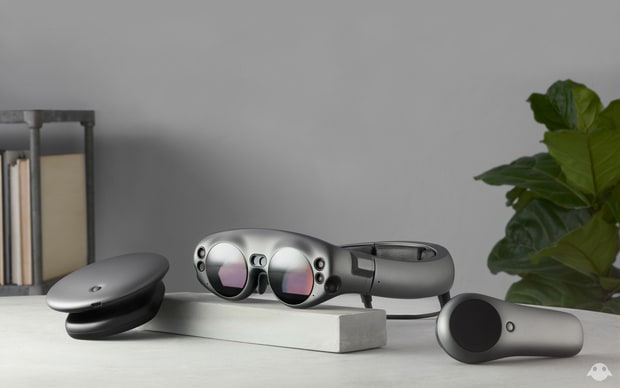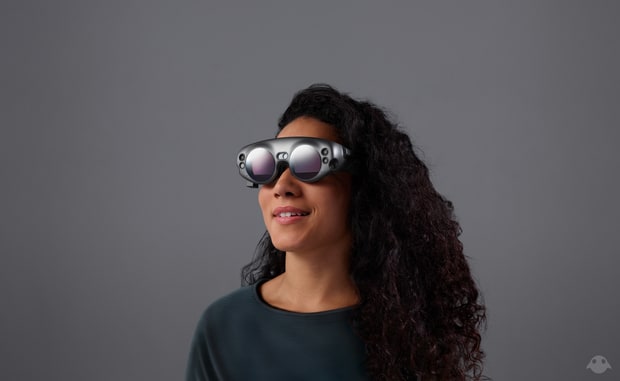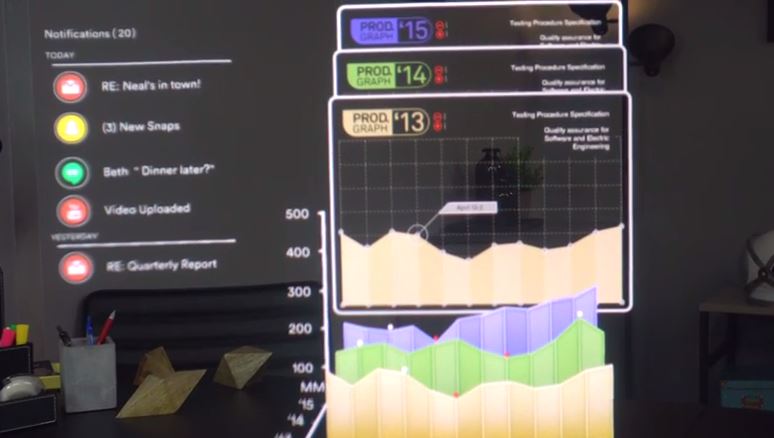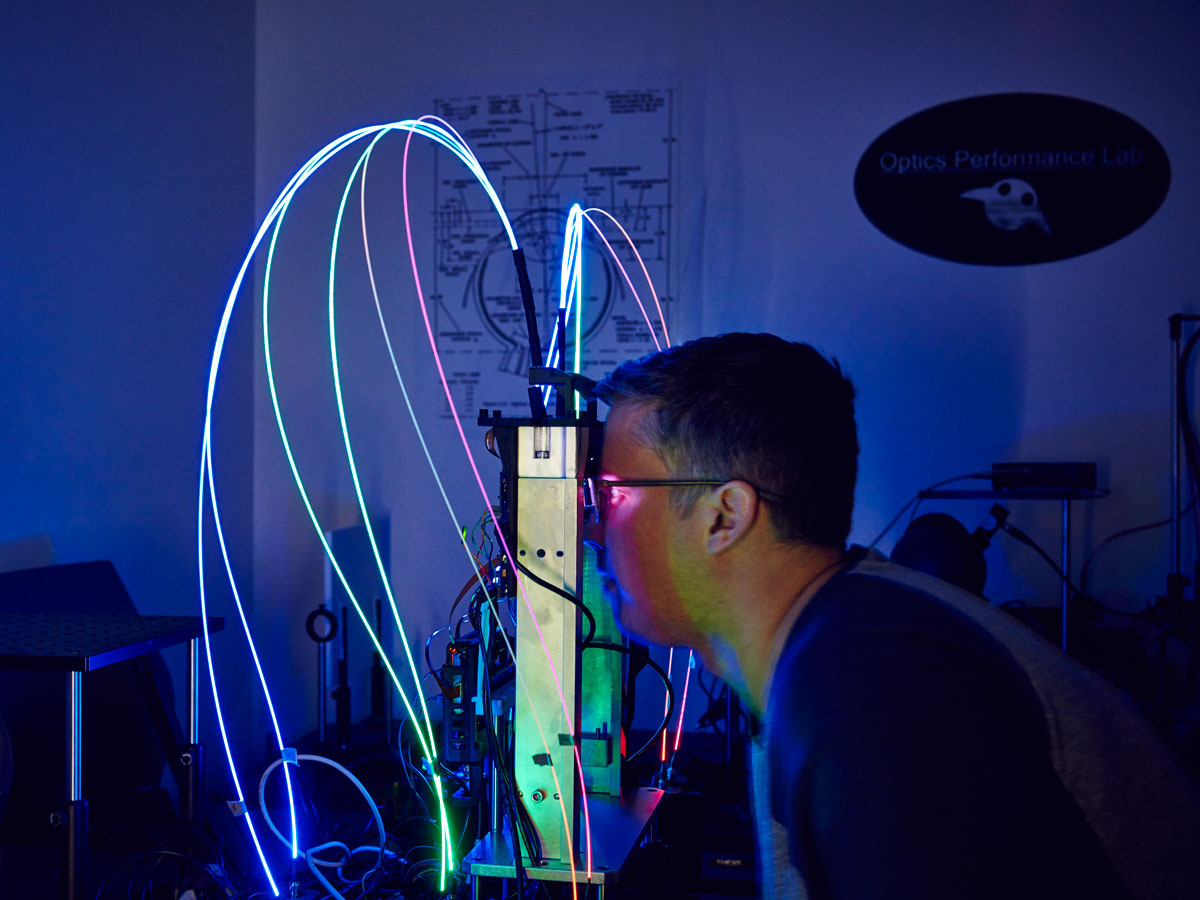Magic Leap: Everything You Need to Know
Magic Leap promises game-changing mixed-reality experiences. But what is the technology, and how does it work?
Magic Leap has long been one of the biggest names in tech that we knew nothing about — until now. This Florida-based startup has been teasing its groundbreaking augmented reality technology for years, and we finally have an idea of what its long-awaited headset will look like and how it will work.

Here's everything you need to know about Magic Leap, and how it could change AR as we know it.
What is Magic Leap?
Why you can trust Tom's Guide
Founded in 2010, Magic Leap is a Florida-based company working on "mixed-reality" technology, which allows you to see virtual objects in the real world. Magic Leap has demonstrated its ability to put a virtual baby elephant in your hands and bring the solar system to your home office, to name a few examples. One video shows Magic Leap's potential to replace your PC, as the Leap's wearer is seen checking emails and three-dimensional charts, shopping for shoes and gazing at a virtual swarm of jellyfish floating above his desk.
What does the headset look like, and how does it work?
The first official set of Magic Leap glasses is called Lightwear. The goggles look sleek and futuristic — you probably wouldn't wear them out on the street, but they're much more attractive and compact than, say, an Oculus Rift headset.

The headset is powered by a Lightpack, which is a circular, puck-like device that can clip onto your pocket and houses the headset's processors. The headset's controller, simply dubbed "Control," is a small, one-handed remote that packs buttons, a touchpad and motion control capabilities.
What's Magic Leap's price and release date?
This early iteration of Lightwear is part of Magic Leap One: Creator Edition. This developer version of the headset is currently slated for a 2018 release; creators can currently sign up on Magic Leap's website to be notified once launch gets closer.
There's no official price for Magic Leap yet, but expect it to be expensive. At ReCode's Code Media Conference in February 2018, Magic Leap CEO Rony Abovitz said that the headset will cost roughly the same as a "higher-end mobile phone to higher-end tablet." While Abovitz didn't specify an exact cost, he suggested that it could be in the same ballpark as the $1,000 iPhone X.
What kinds of apps will Magic Leap support?
While Magic Leap has been pretty silent in terms of official app support, the company's website hints that the headset will be used for everything from gaming and virtual art to immersive online shopping.
The one official Magic Leap app we've seen comes by way of rock band Sigur Ros, who are collaborating with the company on an app called Tónandi that supplements the band's music with stunning AR visuals. All we've seen of the app is a quick five second tease, but it certainly looks promising.
Why should I care about Magic Leap?
When Google throws a bunch of money behind your project, there's a good chance that it's something special. The search giant is one of Magic Leap's key financial backers, contributing to the staggering $542 million that the company raised by late 2014. According to Wired's recent deep-dive feature story on Magic Leap, the startup has secured a total of $1.4 billion in funding. Whatever crazy technology Magic Leap decides to build in the future, it should have more than enough resources to do it.

Because Magic Leap can project virtual displays and bring messages and emails directly to your eyes, it could someday replace your phone, PC and even your entertainment center. Just imagine being able to read through work reports without a single monitor on your desk, or watch football on your own personal screen when there's no TV around.
Hands-on impressions from Wired's Kevin Kelly are also encouraging.
"I found that [Magic Leap] worked amazingly well close up, within arm's reach, which was not true of many of the other mixed- and virtual-reality systems I used," Kelly wrote." "I also found that the transition back to the real world while removing the Magic Leap's optics was effortless, as comfortable as slipping off sunglasses, which I also did not experience in other systems."
How is Magic Leap different from HoloLens and other AR headsets?
According to Wired's report, devices such as HoloLens, the Meta AR glasses and Magic Leap feature semitransparent lenses that project light sources at the edges, eventually reflecting images toward the wearer's eye. Magic Leap says its method of beaming this light is unique, but the company didn't specify exactly how.

What the Wired feature did note, however, is that images on Magic Leap lack the pixelation that sometimes occurs on other AR and VR headsets. That could go a long way toward making "mixed reality" feel like reality.
The current crop of mixed-reality headsets also differ in terms of connectivity — the Meta glasses require a connection to your PC, while HoloLens can operate fully untethered. It's not exactly clear whether the Magic Leap will be powered by an external device, but CEO Rony Abovitz told reporters last fall that the wearable would be "self-contained," according to Engadget.
Sign up to get the BEST of Tom's Guide direct to your inbox.
Get instant access to breaking news, the hottest reviews, great deals and helpful tips.
Mike Andronico is Senior Writer at CNNUnderscored. He was formerly Managing Editor at Tom's Guide, where he wrote extensively on gaming, as well as running the show on the news front. When not at work, you can usually catch him playing Street Fighter, devouring Twitch streams and trying to convince people that Hawkeye is the best Avenger.
-
YTechbee It looks like 2D objects displayed like on a PC monitor? No magic leap Video clips showing the Virtual Objects in 3D with depth so far (only promotional whale & elephant videos with CGI).Reply
Google glass 2.0 with more Rich 2D objects? The system it seems do not have any spatial knowledge.

